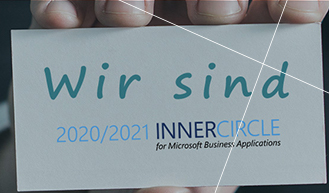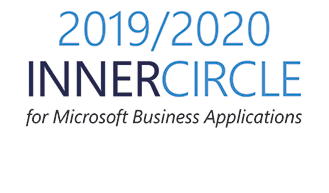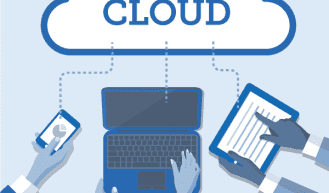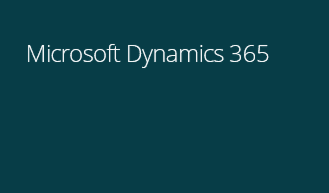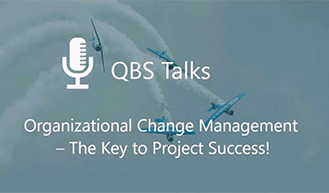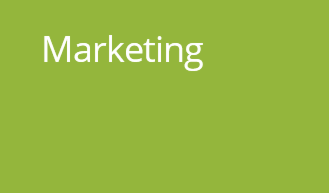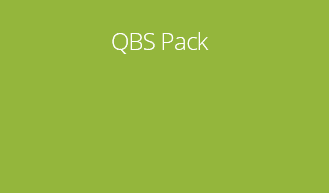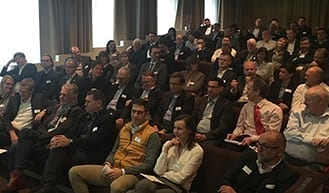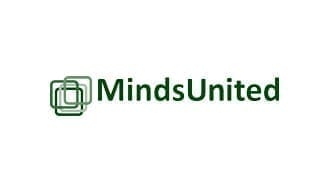2019 predictions for the Microsoft Dynamics business partner community
QBS group
Strategic

2019 is upon us and if you haven’t already done so, you are busy finalising your plans and budgets for the new year.
So, what does 2019 have in store for you, what should you expect to accomplish in the new year and how can you make it happen?
Before I dive into my predictions for 2019, let me make a few assumptions first.
I assume that you serve small and mid-size enterprises with services and solutions based on Microsoft Dynamics NAV and/or 365 Business Central. Your customers typically have up to 250 employees of which the bulk will be in the 10-99 employee segment. There may be larger companies on your reference list, but they are outliers. Within this segment of the market, we have all types of industries represented including non-profits and public companies. I call this the SME-market.
My predictions are made from a European perspective and are affected by how I see things develop here.
Let me kick it off by making my predictions first, and then in the second half of the post outline my recommendations for what you could do to be on top of your game for 2019.
The business model framework
I am a big fan of Alexander Osterwalder’s business model framework because it gives us a well-defined vocabulary for business discussions. Therefore, the first part of this post follows the structure of what Osterwalder calls the Business Model Environment.

Macroeconomic forces
2018 was a great year. Despite the uncertainty of Brexit, the new political vibes on international trade and the US-midterm election, the global economy has performed remarkably well. While 2019 is expected to play a little less aggressively, there are no signs of a recession sneaking up on us. Capital markets will remain friendly with low interest rates, the price on most raw materials, including energy, will increase moderately while prices on consumer goods, in general, will remain stable. The introduction of new international trade policy principles by the US-administration may have a negative impact on their domestic market, but I don’t expect it to have a significant effect on the customers that you serve. Even the uncertainty around the Brexit Endspiel will not have the potential for disturbing the good times.
My conclusion on the Macroeconomic Forces is that you should expect your customers to exit 2018 with comfortable balance sheets and that they are prepared to invest in business model improvements early in the new year.
Key trends
Operating in the IT-industry had allowed you to emphasise why your customers should invest in cost reductions when times were tough and why invest in improving their front-office operation when times were good. You were not misleading anyone. It just shows that information technology is a part of every change your customers are contemplating.
Changes in technology, especially information technology, will remain one of the main drivers for change in 2019. Even societal, cultural, regulatory and socioeconomic trends are affected by rapid changes in technology.
In my crystal ball the major key trends affecting the SME-market in 2019 are:
- Your target audience will spend more time on social media and consume more streaming services (as opposed to printed media and flow TV/radio).
- Sophisticated technologies such as artificial intelligence, business intelligence, analytics, mobile computing, cloud computing and augmented reality will move out of the hype stage, mature and be made available in the IT-solutions with tangible value for SME-customers.
- Blockchain technology for SME-customer applications is still some years away.
- Although the political landscape may be divided on the need for fighting environmental changes, I believe in strong societal and cultural awareness on these issues. We all have kids and grandkids to whom we want to pass on a better world. Green products and services will be in demand from our customers’ customers.
- Unemployment rates will keep falling, and the need for the specialised skills that our industry so much depend on will increase dramatically. If anything applies brakes on your growth opportunities, it will be the lack of talent.
Industry forces (your competitors)
Our industry is changing, and insurgents with new and lean business models are moving in at a rapid rate. Exactly how that affects you depends on the specific sectors in which you operate, but one trend affects all: The rapid changes in technology will change your competitive situation. You will be under attack by companies offering point solutions, and they will attack all corners of your customers’ organisation. Some of them will attack with solutions addressing an isolated need, some with hype and some with management consulting.
I believe that the shift from on-premise perpetual license-based solutions to cloud-based SaaS solutions will reach the inflexion point in 2019 and enter the steep section of the S-curve. In the same way, many of the hyped technologies mentioned above are now mature and can be embedded in the products and solutions you offer customers.
Basing your products and services on Microsoft technology will help you stay ahead of the game. Microsoft has been on an impressive stint these past, few years, and the rate at which they turn out new technology is remarkable. It puts the pressure on you to translate the advancements in the Dynamics 365 platform into benefits for the customers.
If you are not a very big shop but still want to maintain account control, then you may have to strengthen your relationship to other Microsoft partners ensuring that you can deliver all the services that your customers will need. As information technology seeps into everything, it will be more and more difficult to cover everything yourself.
Market forces (your customers)
We have been touting Digital Transformation to the SME market for years now, but the adoption rate has been slow.
Some more reasons for this:
- SME customers do not intuitively understand what new technology can do for them.
- Technology is an enabling factor. Without training, organisational changes and support new technology will not add value.
- There is a limit to how much change SME customers can absorb.
These barriers still exist, but when faced with competitive pressure, your SME-customers are prepared to move faster in 2019 given that they can see the benefits and trust that the solutions you offer are technically uncomplicated to implement. In other words, SME-customers are ready to change if and when your package will address both the technical issues and the corresponding organisational changes. Customers will be looking for incremental changes that do not disturb the entire organisation and jeopardise their business.
Making the business model environment changes even more specific
The observations listed above are general. You can become even better prepared for the changes that will occur in your 2019 business model environment, by running a 1- or 2-day workshop with your key people and maybe some customer representatives.
Alexander Osterwalder’s Business Model Foundry GmbH has developed a cute little €15 card deck that guides you through the process of identifying changes to your business model environment. If you are reluctant to do this exercise on your own the first time, then there are plenty of consultants around that can facilitate the process for you. In the future you should be able to monitor your business model environment without any external facilitation.
How do you take advantage of the good times ahead?
Staying within the Alexander Osterwalder terminology, I will rephrase the question like this: Which changes do you need to make to your business model to take advantage of the changes in our environment? By going through the business model block by block, you can identify which initiatives you must take, how much revenue they may generate and the cost implications.
But before you do that, I suggest you assess your ambitions and formulate your objectives for the new year. The best way to do so is to make a description of what your business will look like three years from now, in broad terms and numbers. Then make a similar description of the state of your affairs by the end of 2020 and by the end of 2019.
Having completed the business model environment mapping and identified your position, it is now time for you to define the action plan.

Customer Relationships
Starting with reviewing your key customers first makes good sense. Maybe you need to take a helicopter view of your customers’ 2019 business model environment. Which challenges and opportunities do they have? You don’t have to guess. Talk to them about it.
The top question is: How can you improve your customer’s business model?
Be proactive and come up with ideas for improving the productivity in each of their nine business model building blocks. This is your opportunity to demonstrate how to use the new technologies in practice.
Making key account plans remains a good idea even when you don’t know precisely how to bring your ideas to fruition. Basing a discussion with your customers on their challenges is always a healthy starting point.
Customer segments and value propositions
Next, take a close look at the customer segments you serve and the value propositions you offer.
Given the business model environment outlook, which changes should you make?
Are there enough potential customers similar to your existing clients, so you can meet your objectives? If that is not the case, then you have to consider entering new market segments.
As you discuss the value propositions, you may find it tough to be specific. Don’t fall back on using industry jargon terms like artificial intelligence, analytics, virtual reality, machine learning or business intelligence. SME-customers rarely know how to translate that into something they need. If you cannot get very specific, then your customers are too different, and you need to reconsider your segmentation.
After this exercise, you will have a description of your customer segments so detailed that you will be able to look them up on LinkedIn.
You will also have described your value propositions using terms that your customers will understand.
A note: As a Microsoft Dynamics business partner, you have a very different role than most of your customers’ other vendors. You are the one with the opportunity to help optimise your customers’ entire business model. That’s the result of information technology seeping into all of the business model’s building blocks. Information technology plays a major role in the business model’s front office as well as in the back office.
An additional note: To make sure you are sufficiently specific you may have to test your value proposition on real customers and record their reactions. In strategy jargon that’s called GOotB (Get Out of the Building); a term coined by Steve Blank as part of the customer development process.
Channel
If you are a VAR you will most likely have a direct go-to-market approach and if you are an ISV, your approach will be indirect. You are most likely not going to change that in the coming year, but you may want to consider reviewing this if you want to be in control of your revenue generation process.
The channel building block describes how you will generate leads, how you will develop prospects, how you will close enough business to meet your objectives and how you will ensure customer success.

The level of noise that you are up against in the marketplace will increase substantially in 2019 and the social media and web channels, where your potential leads spend most of their research time, will make it increasingly challenging to spread content organically. That leaves you with only three options for lead generation through social media:
- Increase the quality of your organic material
- Learn how to build virtual relationships
- Learn how to use paid promotion
If you didn’t do it in 2018, then 2019 will be the year where you formalise your web and social media communication strategy, and I will be surprised if you don’t start with LinkedIn.
Hint: Get an outside instructor and involve your entire organisation. In just a day you can make significant progress. The book LinkedIn Unlocked: Unlock the Mystery of LinkedIn to Drive More Sales Through Social Selling by Melonie Dodaro is also a good place to start.
Key Activities
Can you fulfill your 2019 ambitions with your current activities?
Even without knowing your business intimately, I will guess the answer is no. Whenever we take time out to review our position and direction, we always find activities that we need to stop doing and activities that we need to start doing.
I guess that the three critical activities you need to revisit are:
- Retention and recruitment: How do we find, develop and keep our talent?
- Competencies: How do we improve our technical skills and our business acumen, which enables us to help our customers implement IT-solutions that creates tangible business value?
- Revenue generation: How do we fill and develop a healthy pipeline of strategic projects (“strategic” means that they improve our position in a key segment)?
Is revenue generation really priority number 3?
Yes, in the 2019 ERP market you don’t get far unless you can engage in a highly relevant and professional dialogue with your current and potential customers. You must have top-notch people, who can translate Microsoft Dynamics technology into tangible customer benefits. Those are the people to whom your customers will listen, and from whom they will buy. If you are stretched thin on staff, then my recommendation is to focus on marketing and customer success. Then use your customer success people whenever there is a new sales opportunity.
Key resources
Microsoft Dynamics partners are blessed with simple business models. You only need two resources:
- People
- Working capital
The critical question here is which of the people resources you need on your payroll and which you will source from freelancers and other Dynamics partners.
The vast majority of Microsoft Dynamics business partners are private, owner-managed and with a national focus. They believe in organic growth and an occasional acquisition. Cash-flow management is essential but sourcing external funding for growth purposes are rare. On this subject, 2019 will be no different.
Key partnerships
As a Microsoft Dynamics partner, you by definition have a least two key partnerships:
- The QBS group
- Microsoft
I urge you to keep investing in strengthening both.
If you don’t have relationships with other Microsoft partners, then 2019 is the year to forge some.
With the breadth and depth of Microsoft Dynamics, your wish to maintain account control and the customers’ wish to have only a few vendors cooperation within the partner ecosystem is the answer. The analysis you did in the front-office part of the business model will help you identify areas where you need to build and nurture partnerships.
Revenue/cost
Your business model front-office produce revenue, and the back office generates costs. Combined, this makes up your 2019 budget. If you haven’t done the business model exercise before, then you will end up with the best-documented budget you have ever had.
However, no one has ever managed to meet their budgets (most have less revenue than expected and slightly higher costs) and most can’t explain why. The business model exercise will help you identify what caused the deviation and also what you can do to rectify the situation.
Concluding remarks
Is there a specific relationship between the business model analysis and 2019?
Of course not.
The business model framework has been around since 2010 when Alexander Osterwalder published the book Business Model Generation. However, preparing for a new year is always an excellent opportunity for taking a few days off, revisit your position, take a look in the crystal ball, clarify your ambitions and translate them into specific plans.
The business model framework is a well-documented and easy to learn instrument for conducting business discussions. Learning to play any instrument takes an initial effort. Using the instrument frequently makes a better musician.

With the amount of change facing IT-companies an annual review is way too little. But you need to get started. With your business model and its environment mapped on the wall you have an excellent starting point for keeping track of your business. You can revisit the blueprint regularly and make adjustments as required. Take a full day each quarter to make a thorough review and two to three days annually for a major overhaul.
Happy New Year.















